The SHAPES Smart Mirror Approach for Independent Living, Healthy and Active Ageing
- PMID: 34883942
- PMCID: PMC8659491
- DOI: 10.3390/s21237938
The SHAPES Smart Mirror Approach for Independent Living, Healthy and Active Ageing
Abstract
The benefits that technology can provide in terms of health and support for independent living are in many cases not enough to break the barriers that prevent older adults from accepting and embracing technology. This work proposes a hardware and software platform based on a smart mirror, which is equipped with a set of digital solutions whose main focus is to overcome older adults' reluctance to use technology at home and wearable devices on the move. The system has been developed in the context of two use cases: the support of independent living for older individuals with neurodegenerative diseases and the promotion of physical rehabilitation activities at home. Aspects such as reliability, usability, consumption of computational resources, performance and accuracy of the proposed platform and digital solutions have been evaluated in the initial stages of the pilots within the SHAPES project, an EU-funded innovation action. It can be concluded that the SHAPES smart mirror has the potential to contribute as a technological breakthrough to overcome the barriers that prevent older adults from engaging in the use of assistive technologies.
Keywords: active ageing; ambient assisted living; elderly; internet of things; smart mirror; user-centred design.
Conflict of interest statement
The authors declare no conflict of interest.
Figures



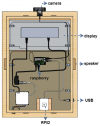



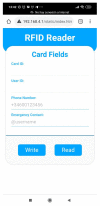




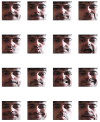






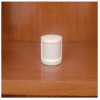
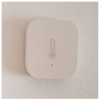










Similar articles
-
Implementation of a pan-European ecosystem and an interoperable platform for Smart and Healthy Ageing in Europe: An Innovation Action research protocol.Open Res Eur. 2022 Jul 4;2:85. doi: 10.12688/openreseurope.14827.1. eCollection 2022. Open Res Eur. 2022. PMID: 37645338 Free PMC article.
-
Evaluating the Energy Requirements of Assistive Technologies for Older Adults.Stud Health Technol Inform. 2023 Aug 23;306:17-24. doi: 10.3233/SHTI230590. Stud Health Technol Inform. 2023. PMID: 37638894
-
Developing Independent Living Support for Older Adults Using Internet of Things and AI-Based Systems: Co-Design Study.JMIR Aging. 2024 Oct 24;7:e54210. doi: 10.2196/54210. JMIR Aging. 2024. PMID: 39447196 Free PMC article.
-
User Perception of Smart Home Surveillance Among Adults Aged 50 Years and Older: Scoping Review.JMIR Mhealth Uhealth. 2024 Feb 9;12:e48526. doi: 10.2196/48526. JMIR Mhealth Uhealth. 2024. PMID: 38335026 Free PMC article.
-
A Systematic Review of Wearable Sensors and IoT-Based Monitoring Applications for Older Adults - a Focus on Ageing Population and Independent Living.J Med Syst. 2019 Jun 15;43(8):233. doi: 10.1007/s10916-019-1365-7. J Med Syst. 2019. PMID: 31203472
Cited by
-
DigiHEALTH: Suite of Digital Solutions for Long-Term Healthy and Active Aging.Int J Environ Res Public Health. 2023 Jun 22;20(13):6200. doi: 10.3390/ijerph20136200. Int J Environ Res Public Health. 2023. PMID: 37444048 Free PMC article.
-
A Decision-Aware Ambient Assisted Living System with IoT Embedded Device for In-Home Monitoring of Older Adults.Sensors (Basel). 2023 Feb 28;23(5):2673. doi: 10.3390/s23052673. Sensors (Basel). 2023. PMID: 36904877 Free PMC article.
-
IoT Smart Flooring Supporting Active and Healthy Lifestyles.Sensors (Basel). 2023 Mar 16;23(6):3162. doi: 10.3390/s23063162. Sensors (Basel). 2023. PMID: 36991873 Free PMC article.
-
Technological applications to enhance independence in daily activities for older adults: a systematic review.Front Public Health. 2024 Dec 4;12:1476916. doi: 10.3389/fpubh.2024.1476916. eCollection 2024. Front Public Health. 2024. PMID: 39697281 Free PMC article.
-
Privacy Barriers in Health Monitoring: Scoping Review.JMIR Nurs. 2024 May 9;7:e53592. doi: 10.2196/53592. JMIR Nurs. 2024. PMID: 38723253 Free PMC article.
References
-
- World Report on Ageing and Health. World Health Organization; Geneva, Switzerland: 2015.
-
- 2019 Revision of World Population Prospects. United Nations; New York, NY, USA: 2019.
-
- Ritchie H., Roser M., Age structure Our World Data 2019. [(accessed on 30 June 2021)]. Available online: https://ourworldindata.org/age-structure.
MeSH terms
Grants and funding
LinkOut - more resources
Full Text Sources
Medical

